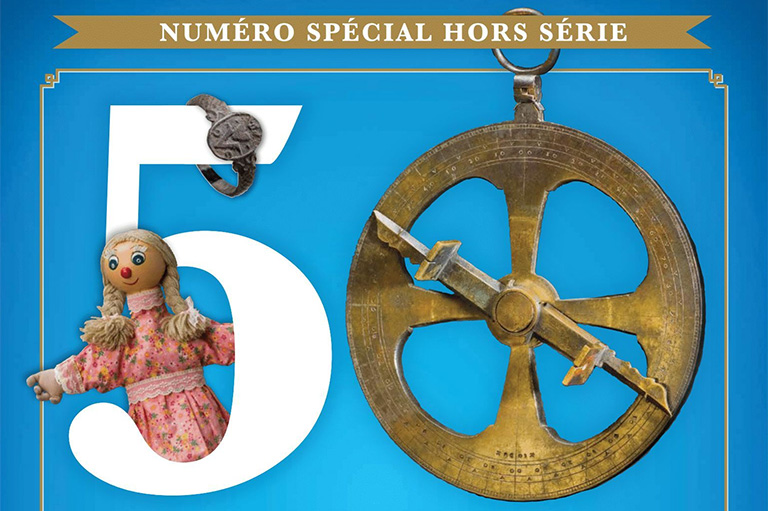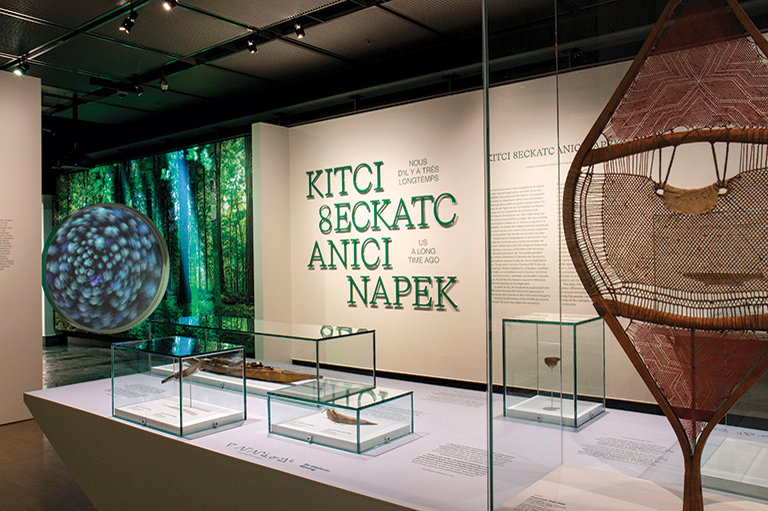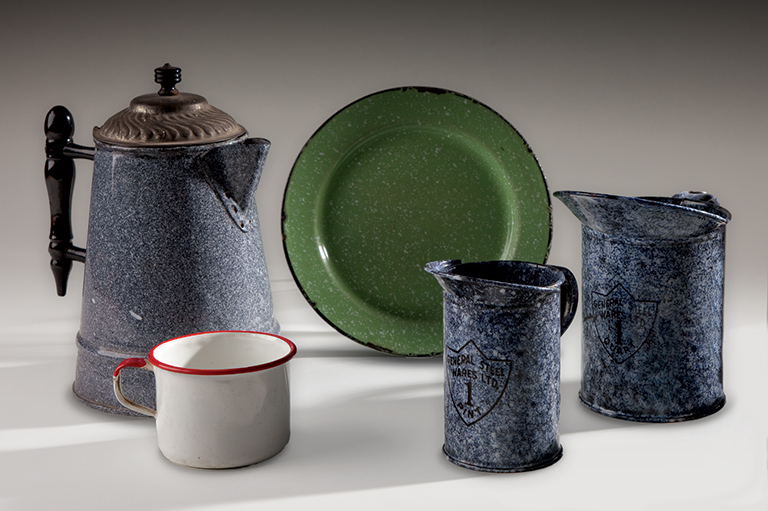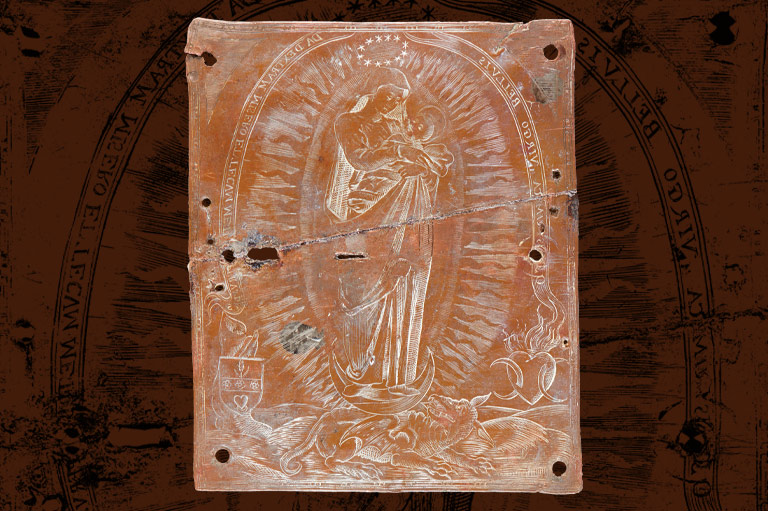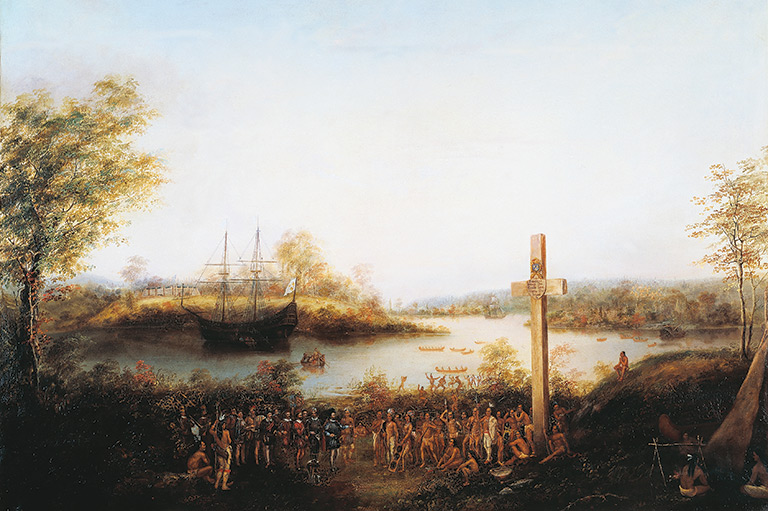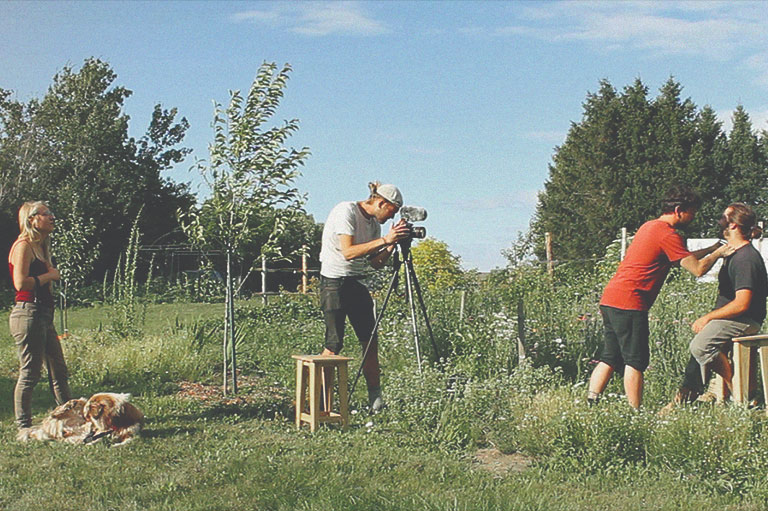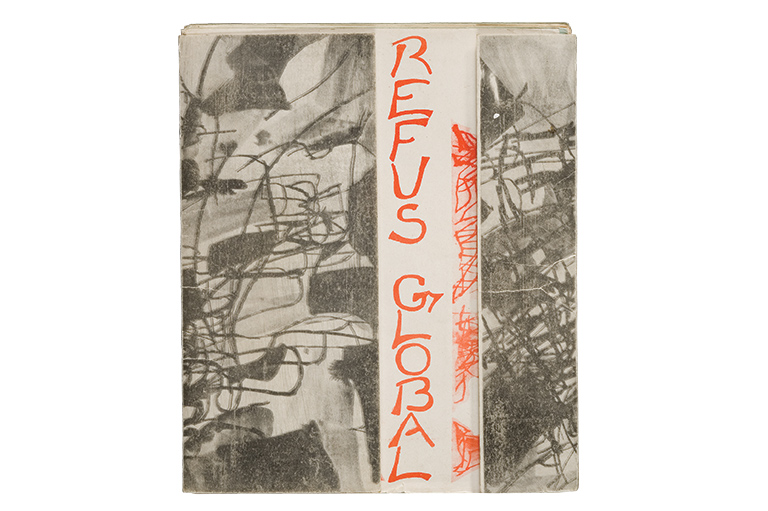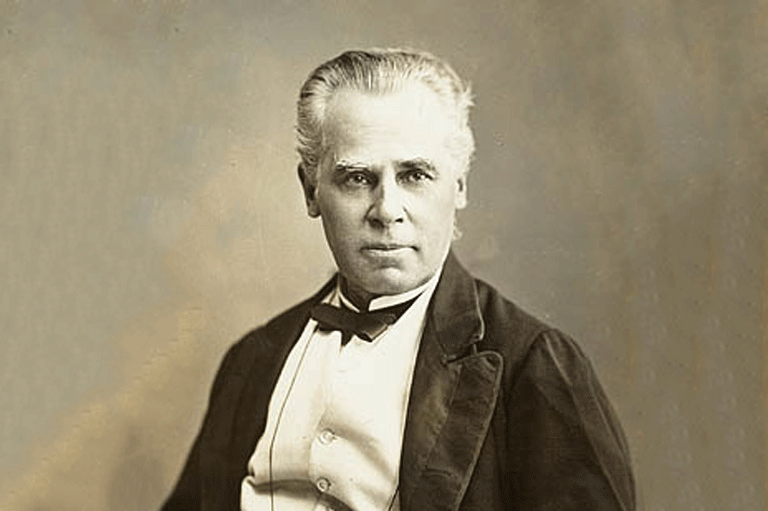Secrets of the Ruins
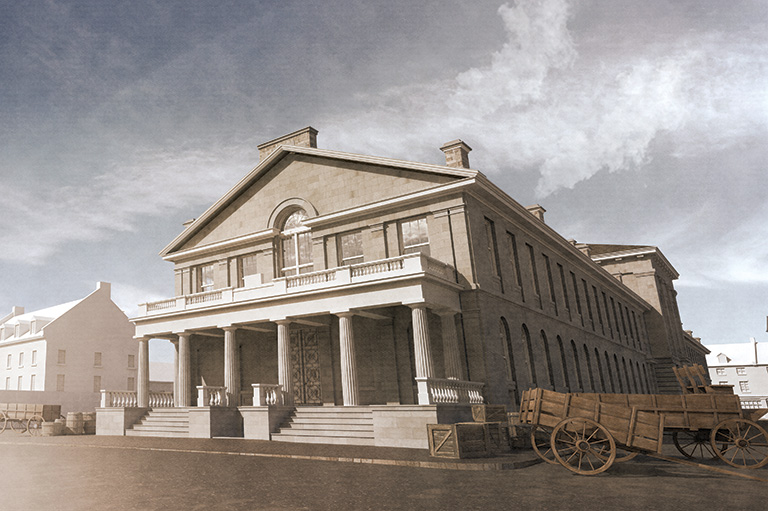
A decade after the rebellion of Lower Canada in 1837–38, tensions continued to simmer between Montreal’s progressive Reformers and traditionalist Tories. The Reformers sympathized with the province’s common people, many of whom had supported the rebellion and had lost homes and property due to burning and looting during the conflict. The Tories, overwhelmingly anglophone, had little in common either with progressive thinkers or with the largely French-Canadian populace. They despised the rebels and their supporters as traitors to the Crown.
In the aftermath of the rebellions in Lower Canada and Upper Canada, Britain merged both colonies into a single Province of Canada in 1841 and instituted responsible government as a concession to Reformers’ demands. As of 1844, the Parliament of the Province of Canada met in Montreal in a stately building that had previously housed St. Anne’s Market, near a point of land known as Pointe-à-Callière.
In the spring of 1849, the Reform government led by Louis-Hippolyte Lafontaine and Robert Baldwin passed the Rebellion Losses Bill, which compensated the inhabitants of Lower Canada (renamed Canada East) for losses arising from “the total or partial unjust, unnecessary, or wanton destruction of the dwellings, buildings, property, and effects of the said inhabitants.” The Tories vehemently opposed the bill, believing that it rewarded the habitants who had sympathized with the rebels and that it represented a loss of anglophone influence in favour of francophones.
The Tories petitioned Governor General Lord Elgin to veto the bill. He refused, instead upholding the democratic will of Parliament. Incensed, the Tories rioted. On the evening of April 25, 1849, a torch-wielding mob invaded Parliament — which was still in session — and burned the building to the ground.
In 2010, the museum and historic site Pointe-à-Callière, Montreal Archaeology and History Complex, initiated a major research program to study and preserve the building’s remains, breathing new life into ruins that had lain dormant for more than 150 years. Part of Montréal’s Birthplace National Historic Site of Canada, and recognized as a heritage site by the Ministère de la Culture et des Communications du Québec, Pointe-à-Callière provides a prime example of the preservation of Canadian archaeological heritage.
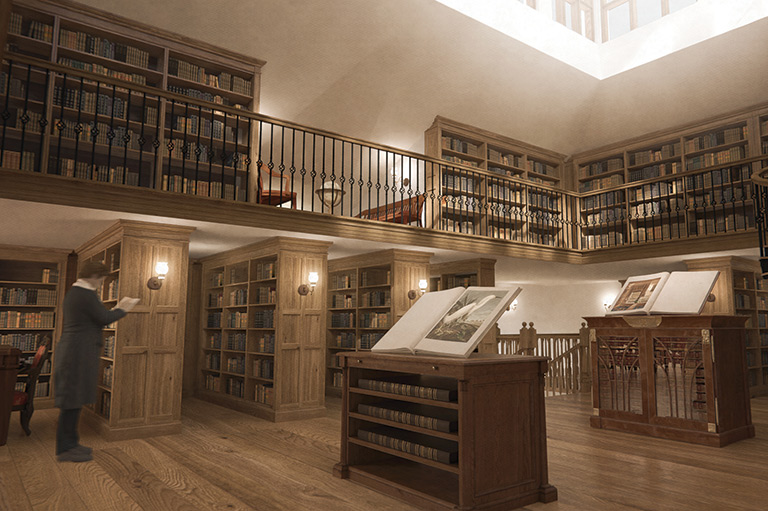
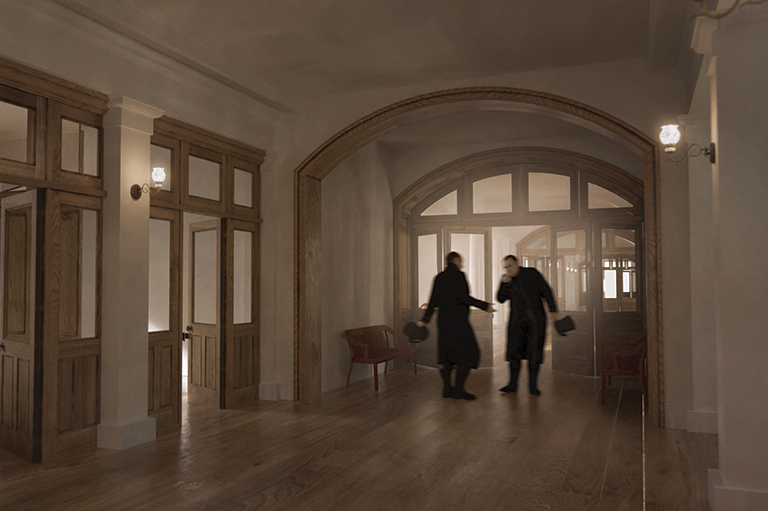
With 7 uniquely curated newsletters to choose from, we have something for everyone.
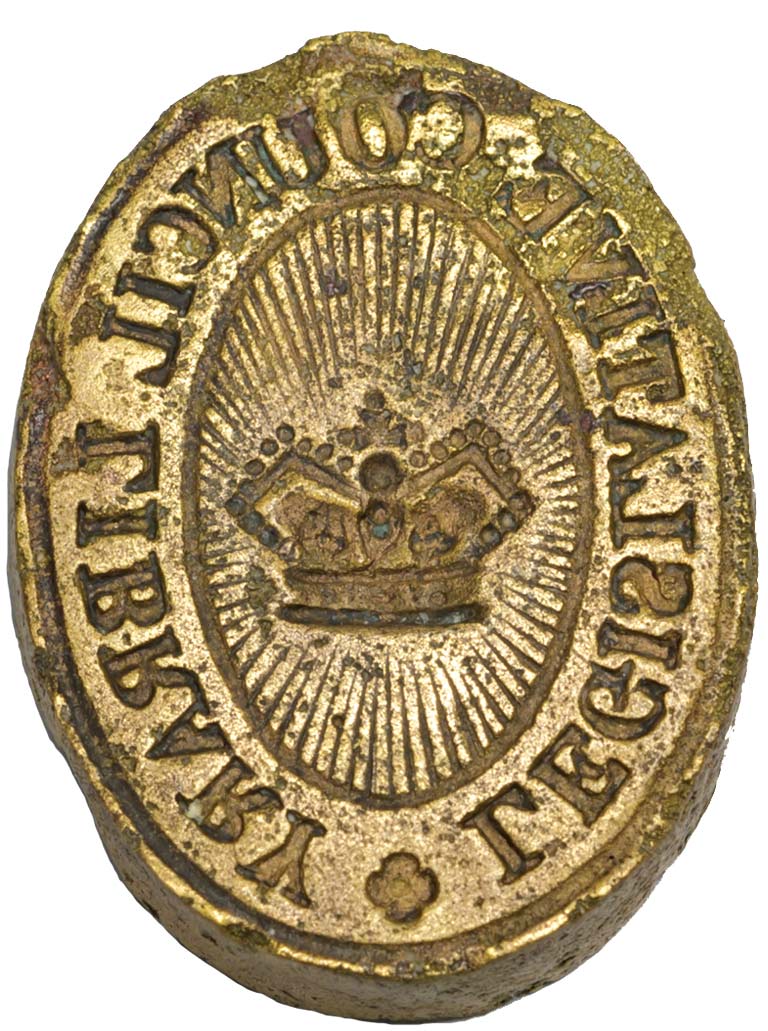
St. Anne’s Market and the Parliament of the Province of Canada form one of Old Montreal’s most significant archaeological sites. During excavations carried out from 2010 to 2017, archaeologists scrutinized these important ruins, seeking clues that would allow for a virtual reconstruction of the building’s interior and exterior. The analysis of thousands of artifacts and organic remains provided insights into the site’s occupants — from butchers to parliamentarians. The many material traces bear witness to a site whose history had remained in the shadows for more than one and a half centuries, revealing clues to this overlooked chapter in Canada’s political history.
The construction of St. Anne’s Market began in 1832 on a point of land named Pointe-à-Callière after Montreal’s third governor, Louis-Hector de Callière, who had established a residence there in 1688. It was a bold project that involved channeling the Little River (la Petite rivière) into an underground canal made of cut stone, then erecting the stone market building — which measured more than one hundred metres in length — atop the canal. The two architects in charge of the project, John Wells and Francis Thompson, were likely inspired by Boston’s Quincy Market, which had been built in 1826. Like its American cousin, St. Anne’s Market embodied the neo-classical style: two storeys high with a basement cellar, it boasted an impressive central bay flanked by two long, porticoed wings. The market opened in the spring of 1834.
The grandest building in the city, it was chosen to house the Parliament when Montreal became the capital of the Province of Canada in 1844. Architect George Browne was tasked with renovating the market building. Although no architectural plans of the parliament building survive, illustrations from the era provide information on the interior of the two parliamentary chambers. As well, plans and construction specifications for St. Anne’s Market, along with certain documents relating to the building’s transformation, allow for a plausible reconstruction of the parliament building’s appearance.
On the ground floor, the former butchers’ stalls were converted into offices for parliamentary clerks and writers, while stairs, added to the porticoes, allowed couriers to come and go between the offices and the chambers while Parliament was in session. On the top floor, the east wing was transformed into the legislative council chamber. Documents from the time describe it as spacious and richly decorated. The office of the clerk and the council library were located behind the chamber.
The west wing was transformed into the legislative assembly chamber, where elected members sat. Behind the chamber was a row of rooms, including the wardrobe (meeting room), a bar, and a smoking room. The legislative library was housed in the building’s central bay, where a new storey was added for this purpose and outfitted with a skylight to let in natural light.
The building and its contents, including more than twentytwo thousand volumes held in its two libraries, were almost entirely destroyed by fire during the Tory riot. Afterwards, the location of Parliament alternated between Toronto and Quebec City until the parliament buildings opened in the permanent capital of Ottawa in 1867. Meanwhile, St. Anne’s Market was rebuilt over the ruins in 1851. In 1901 the market building was demolished; about two decades later the site was paved over as a parking lot, burying all traces of its earlier occupations.
In an astonishing feat of longevity, the stone canal beneath the destroyed building continued to operate as part of Montreal’s sewer system until 1989. This circumstance limited the construction of both commercial real estate and underground public utilities at the site, helping to preserve the building’s remains. Some 350,000 material traces relating to the market and the Parliament therefore lay more or less intact, deep beneath the thoroughfare now known as Place d’Youville. The building’s stone foundations, built in the riverbed, also remained intact down to five metres below the current surface level.
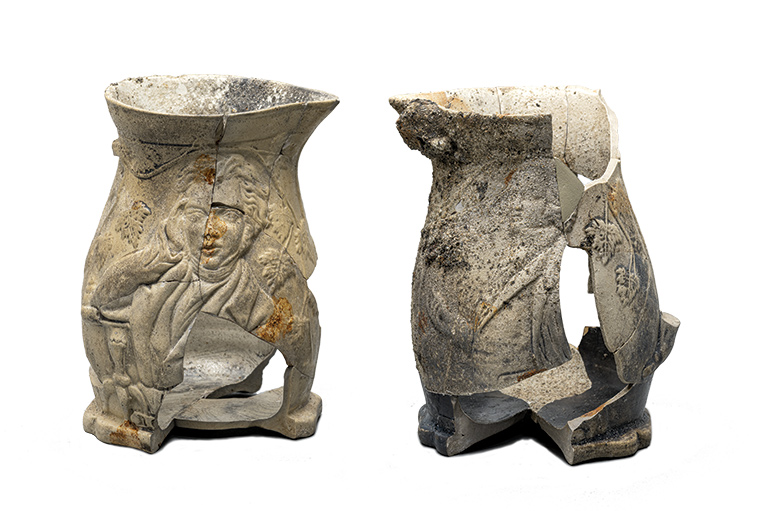
Archaeology has brought to light new elements relating to the building’s occupancy and its occupants. During excavations of the west wing, archaeologists honed in on a bronze postmark stamp bearing the inscription “Legislative Assembly / Canada.” This was a major find: As evidence of the day-to-day work of parliamentarians and civil servants, it corroborated written accounts that described offices on the west side of the building.
Issued for the first time in 1849, the stamp was only briefly in use. In a letter mailed from Montreal that April, Reform Member of Parliament Malcolm Cameron wrote to a correspondent in London, Canada West: “The Parliament will sit until June. All our fine measures will pass.” Ironically, the parliament building was torched the week after he wrote these words. The letter and the stamp used to postmark it were reunited in 2017.
Another stamp, for use with wax seals, was found in an area known to have housed the council library, not far from several dozen stacks of burnt paper. Two clusters of these charred books — one in the east wing and the other in the central bay — corresponded to the locations of the libraries of the legislative council and the legislative assembly respectively.
Archaeological evidence and historical sources point to the fact that at least one family resided in the parliament building. André Leroux dit Cardinal, chief messenger of the legislative assembly, moved in with his wife, Françoise, his three-year-old daughter, Virginie, and a servant in 1844. In the south part of the central bay, in the layer of soil associated with the fire, archaeological digs revealed various artifacts that bear witness to the family’s occupancy. Archaeologists found several sets of high-quality ceramics, including a breakfast service, a dinner service, and a few pieces of toy dinnerware for a child, as well as some personal toiletry items such as ewers, basins, and chamber pots. Experts deem it more likely that these objects were associated with a household than with an institution like Parliament.
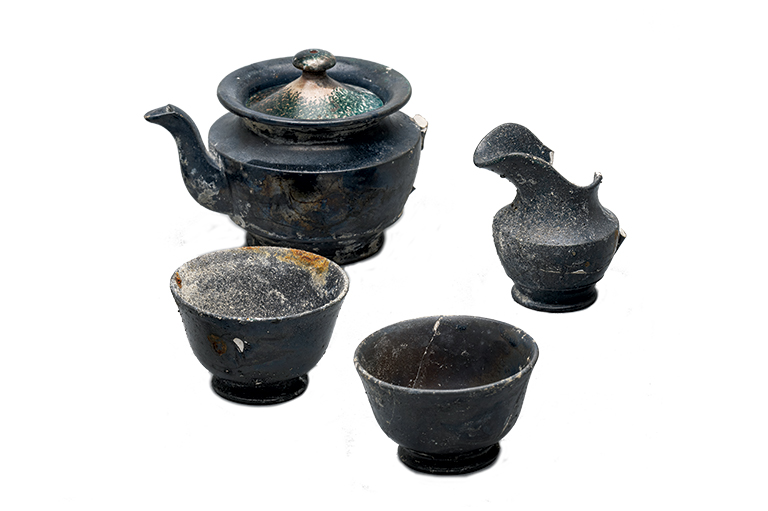
Among the tens of thousands of ceramic fragments that archaeologists unearthed in the central body of the parliament building, some hold particular interest because of their unique characteristics. On reassembling one group of these fragments, two small porcelain stoneware pitchers took shape, bearing the names and likenesses of Richard Cobden, a long-serving British Liberal (Whig) MP, and Robert Peel, Great Britain’s Tory prime minister from 1841 to 1846. The pitchers were made in England to commemorate the British government’s repeal of the Corn Laws in 1846.
The Corn Laws were protectionist pieces of legislation applied to grain and flour to counter foreign competition and to guarantee stable prices for British producers. In 1843, the British government passed the Canada Corn Act, which extended preferential tariffs to Canadian farmers and merchants as subjects of the British Empire. Montreal’s Tory merchants supported the Corn Laws, which gave them favoured access to the British market.
However, Cobden, who supported free trade, sought to rally the British population to pressure Parliament into repealing the protectionist laws. Potato blight and disastrous harvests in the mid-1840s — which caused famine in Ireland and global economic crises — persuaded Peel to give in to Cobden, hoping that free trade would bring cheaper grain imports and thereby provide some relief to the Irish poor.
These pitchers are at once commemorative objects and propaganda pieces. They allowed their owners to make a political statement and to clearly proclaim their stance in the debate. Today we know that the abolition of the Corn Laws contributed to the rising discontent of Tories in Canada — and it was the Tories’ disaffection over this and the Rebellion Losses Bill that ultimately led to the burning of the parliament building.
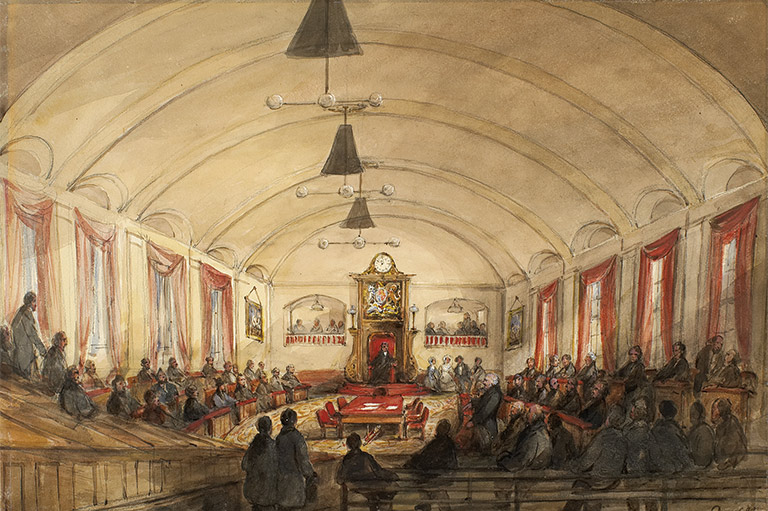
On the evening of April 25, 1849, when rioters entered the parliament building and ransacked the furnishings, a witness described the following scene: Some people unhooked Great Britain’s royal coat of arms from the place where it hung above the Speaker of the Assembly’s chair and violently damaged it. Its fate remained unknown for more than 150 years.
However, after news of the archaeological investigations became public in 2010, Robert P. Kaplan — Solicitor General of Canada from 1980 to 1984 and a federal Liberal MP for twenty-five years — contacted museum officials to inform them that an object he had acquired at auction two decades earlier might prove to be of great importance. He said the person who had sold him the object claimed it was the coat of arms from the legislative assembly — a possibility that seemed both improbable and unhoped-for, given that there had been no further information about the item since the 1849 fire.
Could it be true? A promising initial clue came from an 1848 watercolour of the legislative assembly chamber by James Duncan: The proportions of the coat of arms in the illustration corresponded to those of the rediscovered piece. But one detail stood out: In the British coat of arms, the lion stands to the left of the shield while the unicorn stands to the right. The coat of arms acquired by Kaplan has the animals in the correct positions, but in Duncan’s painting the animals are reversed: the lion stands to the right of the shield and the unicorn to the left. Scotland’s coat of arms, very similar to that of the United Kingdom, has the animals in the same positions as in Duncan’s watercolour. Did the painter make a mistake due to a rushed sketch? Or was reversing the animals a deliberate political gesture by Duncan, who was Irish?
In any case, the damage on the main features of the coat of arms corresponded to the description of the events of 1849. In the end, physiochemical analyses of the paint layers, carried out at the Canadian Conservation Institute at the time of restoration, showed that the base coat contained a pigment developed in 1820. The other coats — twenty layers thick in certain places — ranged from bronzing and guilding to more recent types of paints.
According to a hypothesis put forward by Pointe-à-Callière’s archaeologists, the object was likely taken by the rioters as a kind of trophy and kept for generations, perhaps in the same family, until it was finally sold at auction. If the seller is to be believed, the story of its origin had been preserved — but its decades-long hiatus in the shadows, in private hands, remains insufficiently explained. Thankfully, in the end, the coat of arms managed to find its way back into the public realm.
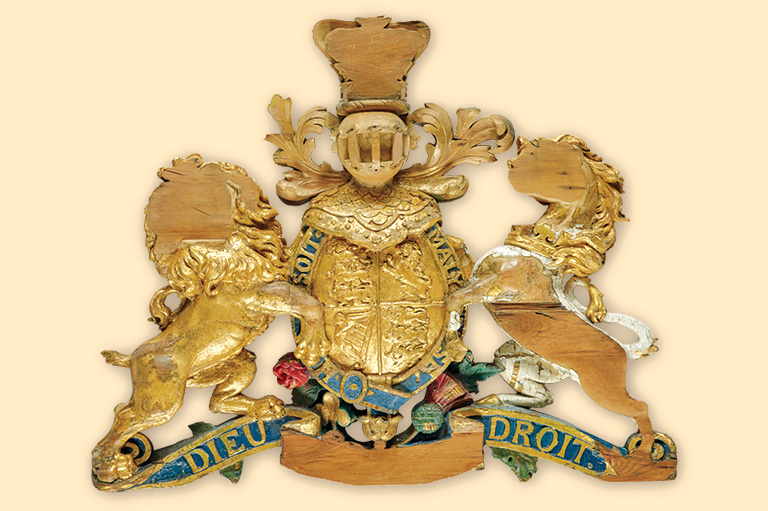
Pointe-à-Callière’s research brought together archaeological and historical data in a new way, resulting in a remarkably faithful reconstruction of the parliament building’s interiors and exteriors, including details of its spatial organization, its furnishings, and its construction materials. Architect and 3-D artist Guy Lessard contributed significantly to this aspect of the research.
This is but an overview of the discoveries made over the last decade. Long forgotten or relegated to a footnote in the history books, Montreal’s Parliament and the city’s status as a one-time capital are once again research priorities for Pointe-à-Callière and its collaborators. The few years during which Montreal served as Canada’s seat of government had a long-lasting impact on the city’s character. From an essentially economic metropolis, it was quickly transformed into a cultural and intellectual centre with the arrival of hotels, restaurants, and an educated elite during the 1840s. This status persisted beyond the capital’s relocation to Toronto, to Quebec City, and, finally, to Ottawa.
This is therefore a story of the remarkable rediscovery of a key moment in the history of Victorian Montreal. It is also the story of a site of significance in Canadian history, which must be preserved for future generations.
For further information on the history of the site, see the book Montréal, Capital City: The Remarkable History of the Archaeological Site of St. Anne’s Market and the Parliament of the Province of Canada.
At Canada’s History, we highlight our nation’s past by telling stories that illuminate the people, places, and events that unite us as Canadians, while understanding that diverse past experiences can shape multiple perceptions of our history.
Canada’s History is a registered charity. Generous contributions from readers like you help us explore and celebrate Canada’s diverse stories and make them accessible to all through our free online content.
Please donate to Canada’s History today. Thank you!
Themes associated with this article
Advertisement


